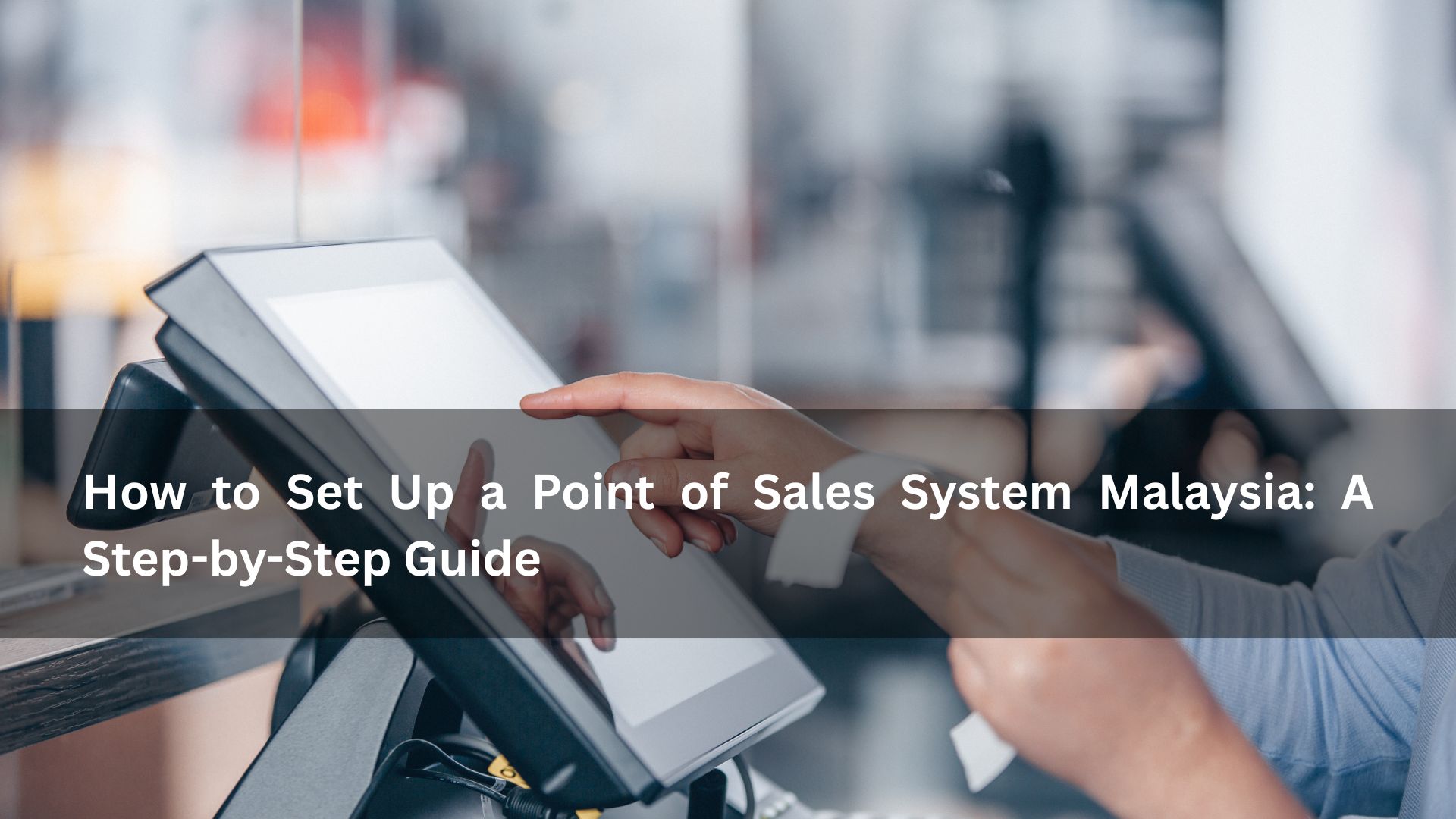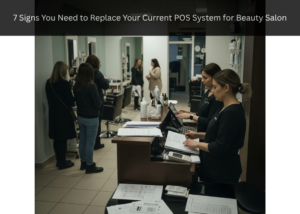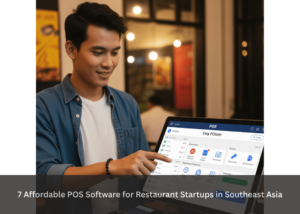Setting up a Point of Sales System Malaysia is one of the most strategic decisions a business can make to improve operations, customer experience, and profitability. Whether you’re in retail, food and beverage, or service-based industries, the right POS system allows you to track inventory, generate reports, and process payments seamlessly.
In this comprehensive guide, we’ll walk you through the full setup process for a Point of Sales System Malaysia, including choosing the right system, installation, staff training, and optimization.
Why You Need a Point of Sales System Malaysia
Before we dive into the setup process, it’s important to understand why investing in a Point of Sales System Malaysia is a smart move:
Streamlined Transactions: Faster checkout experience for customers.
Sales Tracking: Real-time data helps monitor performance.
Inventory Management: Auto-updates stock levels after each sale.
E-Wallet Integration: Popular in Malaysia (e.g., TnG, Boost, GrabPay).
E-Invoice Ready: LHDN-compliant invoicing and tax records.
Remote Access: Cloud-based systems allow business owners to manage outlets anytime, anywhere.
A properly implemented Point of Sales System Malaysia helps reduce manual errors, save time, and give businesses insights to grow faster.
Step 1: Ask Yourself if Your Business Really Need Point of Sales System Malaysia
The first step in setting up a Point of Sales System Malaysia is understanding your specific business requirements:
Consider the Following Questions:
What industry are you in? (Retail, F&B, services)
How many outlets or branches do you have?
Do you need inventory tracking and staff management?
Will you require e-wallet support?
Do you need cloud access or prefer on-premise storage?
This assessment helps you choose a system that aligns with your operational needs.
Step 2: Choose the Right Point of Sales System Malaysia
Once you know what your business needs, it’s time to select a provider. Some of the top Point of Sales System Malaysia options include:
ZEONIQ – All-in-one POS with inventory, CRM, HR, and branch management
StoreHub – Cloud-based POS with e-invoice support
Slurp! – Great for restaurants with table management features
MobiPOS – Offline mode and kitchen display support
BIG POS – Affordable POS solution with touchscreen interface
Key Features to Compare:
Cloud vs on-premise hosting
Multi-outlet support
CRM and loyalty tools
Inventory automation
Payment gateway integrations
Hardware compatibility
Choosing the right Point of Sales System Malaysia depends on budget, scalability, and available support.
Step 3: Purchase Necessary Hardware for Point of Sales System Malaysia
A Point of Sales System Malaysia typically includes both software and hardware. Based on your provider and plan, you’ll need:
Essential Hardware:
POS terminal (touchscreen monitor or tablet)
Receipt printer
Barcode scanner
Cash drawer
Router or network switch
Optional Hardware:
Kitchen display screen (for F&B)
Weighing scale (for grocery or bulk items)
Label printer
Customer-facing display screen
Ensure that your hardware is compatible with your chosen POS software.
Step 4: Install Your Point of Sales System Malaysia
Installation can usually be done in two ways:
Self-Installation (common for cloud-based systems):
Sign in to the software dashboard
Connect peripherals (printer, scanner)
Test each hardware component
Professional Setup (recommended for complex setups):
POS provider handles the installation
On-site training for staff
Network configuration for multi-device access
Some Point of Sales System Malaysia providers offer remote installation support, making the process more efficient.
Step 5: Configure Your Point of Sales System Malaysia Software
Now that your hardware is set up, configure your Point of Sales System Malaysia software settings:
Essential Configuration Tasks:
Add products and services (with SKUs, prices, categories)
Set up tax rates (e.g., SST in Malaysia)
Configure user roles and permissions
Link payment gateways and e-wallets
Activate features like discount codes, loyalty points, and invoice templates
Make sure your system is localized for Malaysian regulations and customer preferences.
Step 6: Train Your Staff on Using the Point of Sales System Malaysia
Proper training is crucial for successful adoption of any Point of Sales System Malaysia. Even the best system fails if users don’t know how to use it.
What to Cover in Training:
Navigating the interface
Processing transactions
Printing receipts and issuing refunds
Managing inventory
Generating sales reports
Encourage staff to ask questions, and use role-playing for real-world sales scenarios.
Step 7: Test the Point of Sales System Thoroughly
Before going live, you should test the Point of Sales System Malaysia under various conditions to ensure smooth operation.
Run Tests for:
Standard and complex transactions
Split payments (e.g., cash + e-wallet)
Sales reporting accuracy
Receipt printing
Internet failure and offline mode (if supported)
Identifying issues early will help avoid disruptions during peak business hours.
Step 8: Go Live and Monitor the Point of Sales System Performance
Once everything is tested and configured, go live with your new Point of Sales System Malaysia.
Post-Launch Checklist:
Monitor transaction logs and reports daily
Evaluate staff feedback and resolve confusion
Identify top-selling products and customer behavior trends
Review performance after the first week and make tweaks if necessary.
Common Mistakes to Avoid When Setting Up a Point of Sales System Malaysia
1. Ignoring Local Compliance
Failing to enable SST settings or e-invoice generation can lead to penalties.
2. Choosing Based Only on Price
A cheap POS might lack key features or support. Choose based on value, not just cost.
3. Skipping Staff Training
If your team isn’t trained, errors will happen and productivity drops.
4. Overcomplicating the Setup
Avoid unnecessary features you won’t use; focus on what truly benefits your business.
Future-Proofing Your Point of Sales System Malaysia
Technology is evolving quickly. Ensure your Point of Sales System Malaysia is ready for the future:
Cloud Backups: Prevent data loss
Mobile POS: Enable staff to take orders on tablets or phones
Omnichannel Support: Integrate with ecommerce platforms
Real-time Analytics: Use data to make fast decisions
Security: Ensure customer and business data is encrypted and secure
A future-ready Point of Sales System Malaysia gives you flexibility and scalability as your business grows.
Conclusion: Start Strong with the Right Point of Sales System Malaysia
Setting up a Point of Sales System Malaysia is more than just installing hardware — it’s a full operational upgrade. By assessing your needs, choosing the right system, training staff, and monitoring performance, you lay a solid foundation for growth.
Whether you’re a cafe owner in Kuala Lumpur, a retailer in Penang, or a salon in Johor, the right Point of Sales System Malaysia will help your business run smarter and faster.
Take the time to set it up properly — and your POS system will become one of your most powerful business tools.







